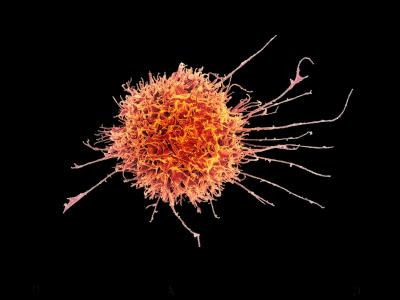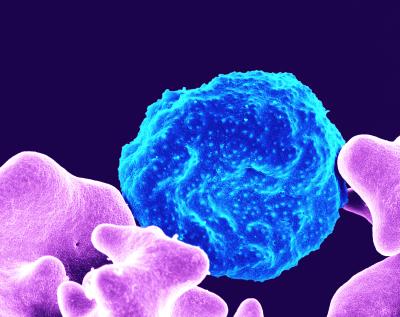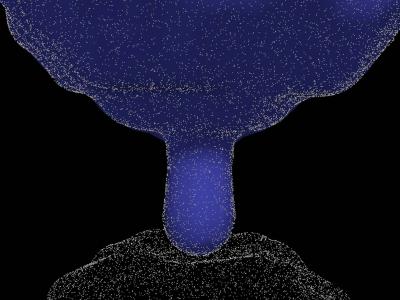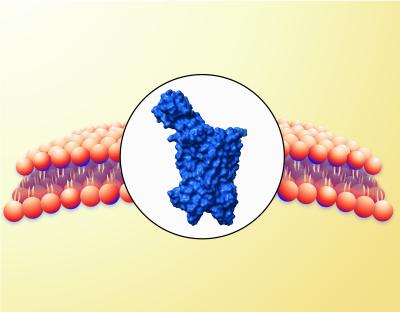The immune system senses and responds to changes in physiologic health, and a new tool called the immune health metric (IHM) can measure and even predict some of these changes, an NIAID study has found. If doctors could use the IHM to detect health problems long before symptoms appear, they could potentially act early to prevent disease, the investigators suggest. Their findings are published in the journal Nature Medicine.
The researchers developed the IHM starting with extensive analyses of biological samples from nearly 230 people who have one of 22 rare, severe immune disorders caused by a mutation in just one gene. The scientists also included samples from 42 healthy people matched to the others by age and sex. The analyses involved many elements, including gene transcripts in immune cells, blood-based proteins, and the frequency of various blood cells, all related to the immune system. The initial goal was to learn if there were immune-system similarities among people with the diverse array of diseases.
To the researchers’ surprise, the disparate diseases had many similar features when viewed through the lens of the immune system as a whole, rather than only the mutated gene and its effects. The primary source of immune variation came from aspects of the individual, irrespective of their disease or the medication they were taking.
To explore this observation further, the scientists fed their gene-transcript and blood-based protein data into artificial intelligence (AI) tools. The first tool assessed differences among the people in the study without knowing their disease or symptoms. This analysis yielded a numeric measurement called jPC1 that was based on a specific combination of key gene transcripts and proteins. jPC1 correlated negatively with inflammation and related markers, and positively with parameters not linked to inflammation. This suggested that jPC1 could be used to measure immune health. Further supporting this finding, the group of healthy participants had a significantly higher mean jPC1 score than people grouped by severe immune disorder.
The second AI tool the researchers tested is a machine-learning model that they taught to distinguish between healthy people and those with severe immune disorders. The investigators did this using the gene transcripts, blood-based proteins, and blood cells from the original biological samples. The scientists used their model to compute the probability that a person belonged to the immunologically healthy group. Each person received a score based on that probability. The researchers called this scoring system the immune health metric, or IHM. The IHM scores correlated highly with the jPC1 scores, suggesting that the gene transcripts and proteins key to jPC1 drive immune health differences among individuals.
When the scientists applied the IHM to the healthy people in their study and data from an independent study of healthy aging conducted by NIH’s National Institute on Aging, the one variable the metric correlated with was age. There was an inverse relationship between IHM score and age, with ages ranging from 22 to 93. This indicated that aging, like disease, distances people from optimal immune health.
The authors validated the IHM by showing it could reflect immune health status and treatment outcomes and even predict some health outcomes when applied to gene transcript data, blood-based protein data, or both from studies previously conducted by other scientists. For instance, IHM and jPC1 scores accurately distinguished people with common autoimmune and inflammatory diseases from healthy people. IHM scores also reflected variability in disease activity among people with lupus, an autoimmune disease, during periods with symptoms of differing severity and periods without symptoms. Among people with rheumatoid arthritis, IHM scores reflected differences in the immune health of people whose symptoms responded to treatment compared to those whose symptoms did not. In vaccine studies and a heart failure study, people with higher baseline IHM scores had better antibody responses to vaccines and better future heart health than people with lower baseline scores. Finally, there was an inverse relationship between IHM score and body-mass index (BMI) in a study of sedentary adults, even after controlling for age, sex, race, and levels of C-reactive protein, which the liver releases in response to inflammation.
While there are many tools available to measure physiologic and organ-system function and health, few tools measure immune-system health. The IHM could help fill this gap. The investigators hope that clinicians will one day be able to use the predictive capacity of the IHM to detect diseases early enough for preventive medicine to halt disease progression and preserve health.
John S. Tsang, Ph.D., and Rachel Sparks, M.D., M.P.H., led the study. Dr. Tsang was co-director of the NIH Center for Human Immunology at NIAID and chief of the Multiscale Systems Biology Section in the NIAID Laboratory of Immune System Biology when most of the research was conducted. He is now the founding director of the Yale Center for Systems and Engineering Immunology, a professor of immunobiology and biomedical engineering at Yale University, and an adjunct investigator in the NIAID Laboratory of Immune System Biology.
Dr. Sparks was an assistant clinical investigator in the NIAID Laboratory of Immune System Biology and an attending physician at the NIH Clinical Center when she conducted the research. She is now an experimental medicine physician at Astra Zeneca in Gaithersburg, Maryland, and a special volunteer in the NIAID Laboratory of Immune System Biology.
Reference: R Sparks et al. A unified metric of human immune health. Nature Medicine DOI: 10.1038/s41591-024-03092-6 (2024).





